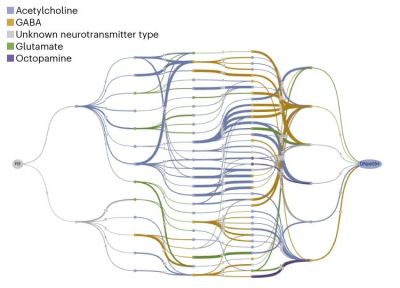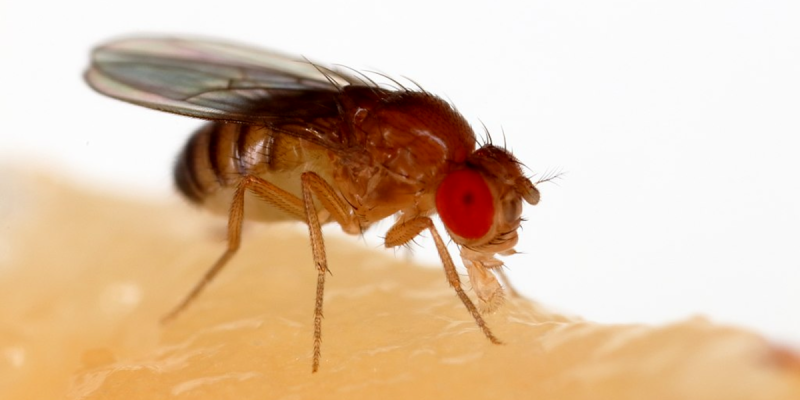
Compared to the human brain, a fruit fly (Drosophila melanogaster) brain is positively miniscule, not only in sheer volume, but also with a mere 140,000 or so neurons and 50 million synapses. Despite this relative simplicity, figuring out how the brain of such a tiny fly works is still an ongoing process. Recently a big leap forward was made thanks to crowdsourced research, resulting in the FlyWire connectome map. Starting with high-resolution electron microscope data, the connections between the individual neurons (the connectome) was painstakingly pieced together, also using computer algorithms, but with validation by a large group of human volunteers using a game-like platform called EyeWire to perform said validation.
This work also includes identifying cell types, with over 8,000 different cell types identified. Within the full connectome subcircuits were identified, as part of an effort to create an ‘effectome’, i.e. a functional model of the physical circuits. With the finished adult female fruit fly connectome in hand, groups of researchers can now use it to make predictions and put these circuits alongside experimental contexts to connect activity in specific parts of the connectome to specific behavior of these flies.
Perhaps most interesting is how creating a game-like environment made the tedious work of reverse-engineering the brain wiring into something that the average person could help with, drastically cutting back the time required to create this connectome. Perhaps that crowdsourced research can also help with the ongoing process to map the human brain, even if that ups the scale of the dataset by many factors. Until we learn more, at this point even comprehending a fruit fly’s brain may conceivably give us many hints which could speed up understanding the human brain.
Featured image: “Drosophila Melanogaster Proboscis” by [Sanjay Acharya]
















Hm. The 80286 processor has ‘merely’ 134 000 transistors and can run a sophisticated multitasking system such as OS/2.
Which in turn leads to the software question. Is the ‘programming’ of the fly known, by any chance? The genetic memory, the instinct etc? Basic emotions like hunger or exhaustation?
Not sure about this fly because and I did not RTFA, but what you describe has been known for nematodes quite accurately, to the point where it’s even possible to fully emulate their brain. (see OpenWorm dot org).
Neural networks are the hardware and the software, they don’t have to load what they do from memory. The instincts are encoded in the structure of the brain. In my opinion this brain is too simple for emotions, but the input and awareness of hunger and exhaustion will be there.
This bring me to mind the awesome work of Mark W. Tilden and the BEAM robotics wave. I still remember my moving cactus plant driven by two zener -based solar engines. RIP my cactus :(
What are the odds of the first dead human brain to be scanned is someone with a high IQ working on the project ?
And what are the odds are that the second dead human brain to be scanned, after the first sucess, will be the billionaire who is financing said project ?
I’m willing to bet 100 quatloos on each!
I’d imagine the first brain to get simulated… being a simulation of the recorded real-brain… it’s going to start it’s existence in the last moment the real brain processed. So.. getting scooped out of it’s head.
What are the odds the first human brain to be mapped is a pregeneration of Idiocracy?
I’d assume the Fruit Fly brain is much like it’s name, half Fruit, half Fly.
So how to mass kill them all? Or make them incapable of flying.
I do wonder if this would let us find quirks in the way they think like exploiting a videogame AI.
Maybe we can use these sorts of simulations on various pests to create some sort of control mechanism as strange and magical as the idea of vampires needing permission to enter.
And get problems with whole ecosystems? only thing i would code in them and other critters that like to infest homes is aversion to specyfic smell – use chemical that we can’t smell then spray homes with it this way no nasties inside homes and we don’t interfere with ecosystems.
maybe now we can finally gain some insight into our politicians thought processes.
Nope, this brain is too complex for that.